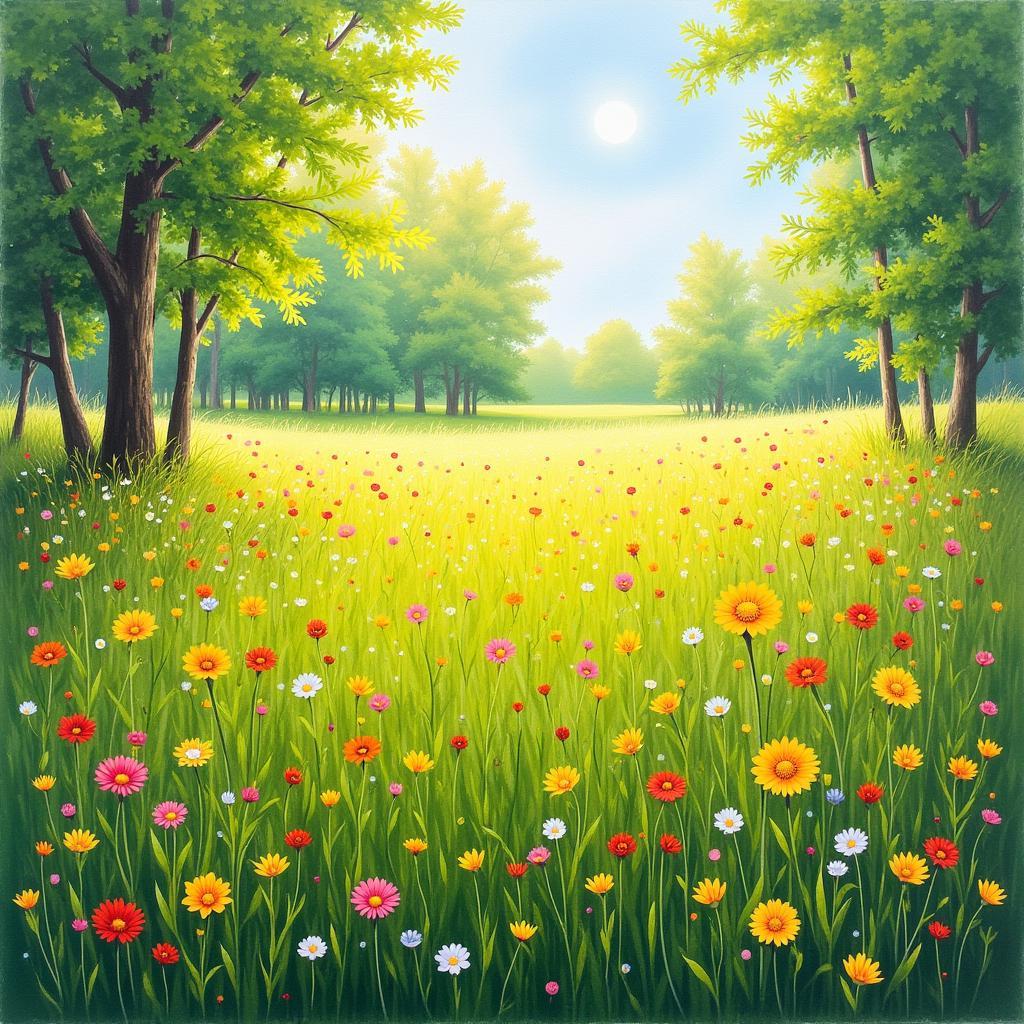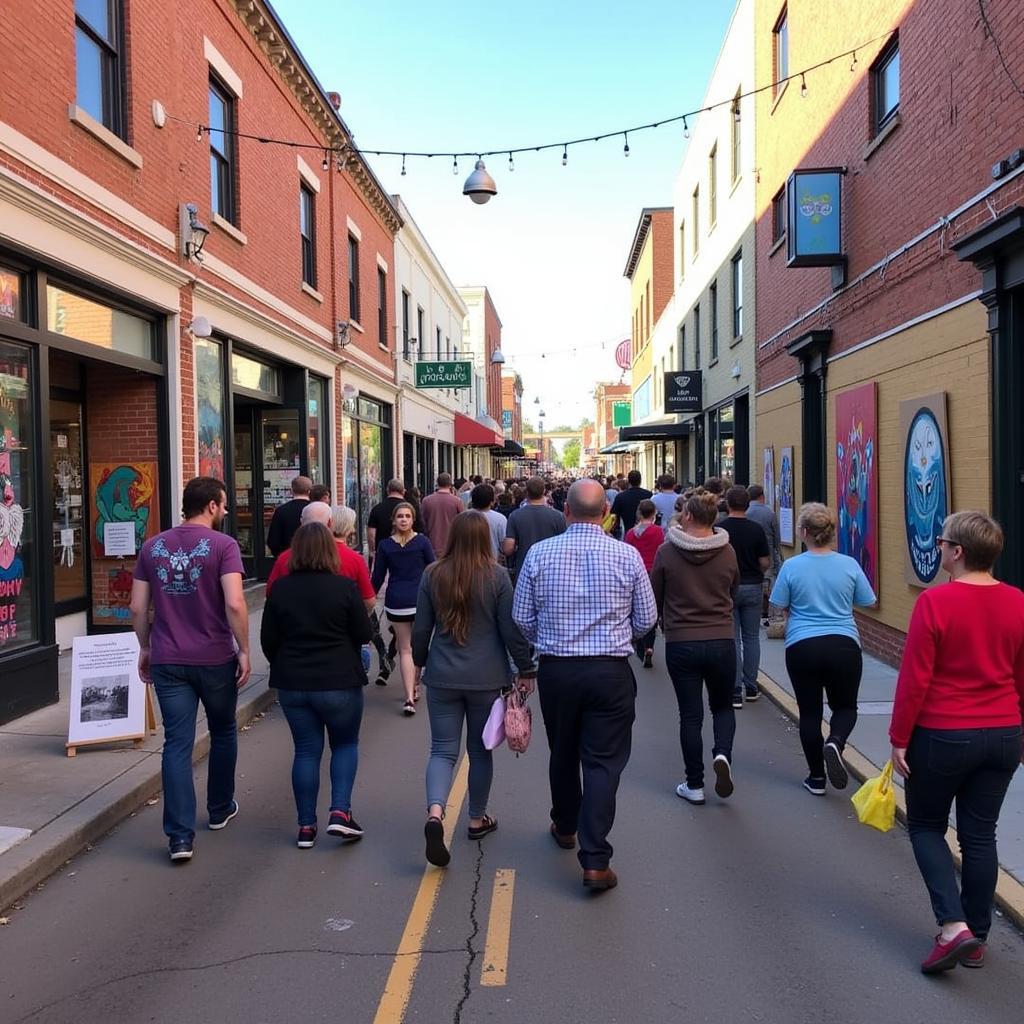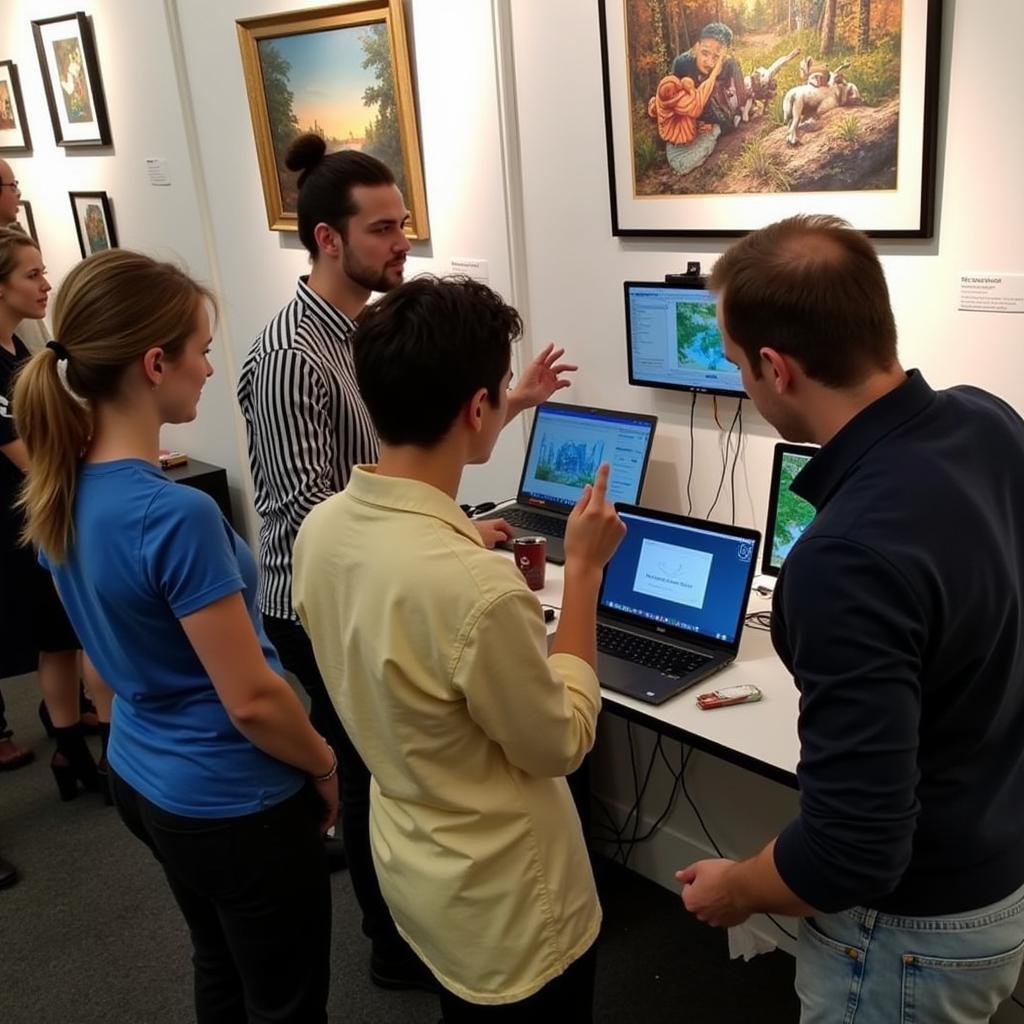Capturing the Essence of Impressionist Art Landscape
Impressionist Art Landscapes revolutionized the way we perceive the natural world. These vibrant and evocative paintings capture fleeting moments of light and atmosphere, inviting viewers to experience the sensory richness of the outdoors. From Monet’s water lilies to Renoir’s bustling parks, Impressionist artists masterfully conveyed the ephemeral beauty of their surroundings. Right after exploring this genre, you might be interested in famous art with meaning.
The Impressionist movement, emerging in late 19th-century France, broke away from the rigid academic traditions of the time. Artists like Claude Monet, Pierre-Auguste Renoir, Camille Pissarro, and Alfred Sisley sought to capture the subjective experience of light and color, rather than meticulously rendering realistic details. Their emphasis on en plein air painting, working directly in nature, allowed them to immerse themselves in the landscape and translate their immediate impressions onto canvas. This departure from studio-based painting led to a fresh and dynamic approach to landscape art.
Exploring the Characteristics of Impressionist Landscapes
What distinguishes an Impressionist landscape? Several key characteristics define this captivating style. Short, broken brushstrokes create a sense of movement and vibrancy, mimicking the flickering light and changing atmosphere. The use of pure, unmixed colors applied directly to the canvas heightens the intensity and luminosity of the scene. Instead of blending colors on the palette, Impressionist artists relied on optical mixing, allowing the viewer’s eye to blend the colors together, creating a more vibrant and shimmering effect.
The Role of Light and Color in Impressionist Art Landscape
Light is the true subject of Impressionist art landscapes. Artists explored the interplay of light and shadow, capturing the transient effects of sunlight on water, foliage, and the atmosphere itself. They often painted the same scene at different times of day to capture the ever-changing nuances of light. The use of complementary colors, such as blue and orange or violet and yellow, further enhances the vibrancy and luminosity of the paintings.
 Impressionist Landscape: The Interplay of Light and Color
Impressionist Landscape: The Interplay of Light and Color
Famous Impressionist Art Landscapes and Their Artists
Numerous iconic Impressionist landscapes have become cornerstones of art history. Monet’s “Impression, Sunrise,” the painting that gave the movement its name, captures the hazy atmosphere of the port of Le Havre at dawn. Renoir’s “Bal du moulin de la Galette” depicts a lively Parisian scene, bathed in dappled sunlight. Pissarro’s “The Boulevard Montmartre at Night” shows the bustling city streets illuminated by gaslight. These masterpieces and countless others offer a glimpse into the world as seen through the eyes of the Impressionists. If you enjoy the coastal vibe, check out beach nude art.
How Impressionism Changed Landscape Painting Forever
Impressionism revolutionized landscape painting by shifting the focus from objective representation to subjective experience. It paved the way for future artistic movements, such as Post-Impressionism and Fauvism, which further explored the expressive potential of color and form.
 The Influence of Impressionism on Landscape Painting
The Influence of Impressionism on Landscape Painting
Understanding the Impact of Impressionist Art Landscape
The impact of Impressionist landscapes extends beyond the art world. Their evocative depictions of nature have influenced our understanding of beauty and our appreciation for the natural world. They remind us to pause and savor the fleeting moments of beauty that surround us. Perhaps this artistic exploration will inspire you to discover more about west coast art.
“Impressionism teaches us to see the world with fresh eyes,” says renowned art historian Dr. Eleanor Ainsworth. “It encourages us to appreciate the beauty of the everyday, the transient, and the subjective.” Another expert, Dr. James Blackwood, adds, “The Impressionists’ focus on light and color transformed landscape painting, making it more expressive and emotionally resonant.”
Conclusion: The Enduring Appeal of Impressionist Art Landscape
Impressionist art landscapes continue to captivate audiences with their vibrant colors, dynamic brushwork, and evocative depictions of nature. They offer a unique and enduring perspective on the world, reminding us of the beauty that can be found in the everyday. Explore the world of Impressionist art and discover the magic of these timeless masterpieces. For more captivating artistic explorations, you might enjoy dave whitlock art. Or if you prefer vibrant color contrasts, red green art might pique your interest.
FAQ
- What is the main characteristic of Impressionist art? The focus on capturing the fleeting effects of light and color.
- Who are some famous Impressionist artists? Claude Monet, Pierre-Auguste Renoir, Camille Pissarro, and Alfred Sisley.
- What does en plein air painting mean? Painting outdoors, directly in nature.
- What is optical mixing? The technique of placing unmixed colors side by side on the canvas, allowing the viewer’s eye to blend them together.
- Why is Impressionism considered revolutionary? It shifted the focus from objective representation to subjective experience in art.
- Where can I see Impressionist art? Major museums around the world, including the Musée d’Orsay in Paris and the Metropolitan Museum of Art in New York.
- How did Impressionism influence later art movements? It paved the way for Post-Impressionism and Fauvism, which further explored expressive color and form.
More Questions & Resources
- How did Impressionism impact other art forms like music and literature?
- Explore the techniques used by Impressionist artists to capture light and atmosphere.
- Discover the historical context of the Impressionist movement and its social impact.
For further exploration, visit our website for more articles and resources on various art movements and styles.
Contact Us
For any support or inquiries, please contact us:
Phone: 02462573573
Email: danteum@gmail.com
Address: Savico Megamall, 7-9 Đ. Nguyễn Văn Linh, Gia Thụy, Long Biên, Hà Nội 10000, Việt Nam.
We have a 24/7 customer support team.

